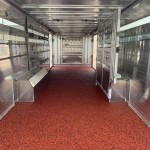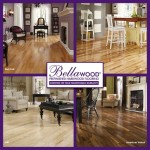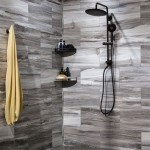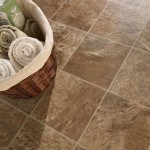Bamboo Flooring In Bath: A Sustainable and Stylish Choice
Bamboo flooring has steadily gained popularity as a flooring material, particularly in environmentally conscious areas like Bath. Its appeal stems from its reputation as a sustainable resource, combined with its aesthetic versatility and relative durability. This article will explore the key aspects of bamboo flooring in Bath, examining its advantages, disadvantages, types, installation considerations, and maintenance requirements.
Bath, known for its historical architecture and commitment to environmental preservation, presents a unique market for flooring options. Residents often seek materials that blend seamlessly with the city's aesthetic character while minimizing their environmental impact. Bamboo flooring satisfies both criteria, providing a natural and elegant look that complements various architectural styles and aligning with the area’s emphasis on sustainability.
The environmental benefits of bamboo are a primary driver of its adoption. Bamboo is a rapidly renewable resource, capable of reaching maturity in as little as three to five years. This contrasts sharply with hardwood trees, which require decades to regenerate. This rapid growth rate makes bamboo a more sustainable alternative to traditional hardwood, reducing deforestation and preserving valuable ecosystems.
Furthermore, bamboo cultivation requires minimal pesticides and fertilizers, reducing the environmental impact associated with agricultural practices. Its extensive root system also helps prevent soil erosion, contributing to land conservation. These factors collectively position bamboo flooring as an environmentally responsible choice for homeowners in Bath and beyond.
Beyond its environmental credentials, bamboo flooring offers a range of aesthetic and functional benefits. It is available in various shades and grain patterns, allowing homeowners to customize the look of their floors to match their desired décor. From light and airy tones to rich and dark hues, bamboo flooring can complement a wide range of interior design styles, from traditional to contemporary.
The hardness and durability of bamboo flooring can vary depending on the manufacturing process. Strand-woven bamboo, in particular, is known for its exceptional strength and resistance to wear and tear. This type of bamboo flooring is created by shredding bamboo stalks into fibers and then compressing them under high pressure. The resulting material is denser and more durable than traditional horizontal or vertical bamboo flooring.
However, it is important to recognize that bamboo flooring, like any flooring material, has its limitations. It is susceptible to scratches, dents, and water damage if not properly maintained. While strand-woven bamboo offers superior durability, even this type of flooring can be damaged by heavy furniture, sharp objects, or excessive moisture.
The cost of bamboo flooring can vary depending on the type, quality, and installation method. Generally, it is comparable to mid-range hardwood flooring. While some homeowners may be tempted to opt for cheaper, lower-quality options, it is often advisable to invest in higher-quality bamboo flooring to ensure longevity and performance. The long-term cost of replacing inferior flooring can outweigh the initial savings.
Key Point 1: Types of Bamboo Flooring and Their Characteristics
Several types of bamboo flooring are available, each with its own unique characteristics and properties. The main types include horizontal, vertical, strand-woven, and engineered bamboo flooring. Understanding the differences between these types is crucial for selecting the appropriate flooring for a specific application.
Horizontal bamboo flooring is created by laminating strips of bamboo together horizontally. This results in a distinctive grain pattern that showcases the nodes of the bamboo stalks. Horizontal bamboo flooring is generally softer than strand-woven bamboo and may be more prone to scratches and dents.
Vertical bamboo flooring is similar to horizontal bamboo flooring, but the strips of bamboo are arranged vertically. This creates a more uniform and understated grain pattern. Vertical bamboo flooring is typically harder than horizontal bamboo flooring but still less durable than strand-woven bamboo.
Strand-woven bamboo flooring, as previously mentioned, is the most durable type. It is created by shredding bamboo stalks into fibers and then compressing them under high pressure and heat. This process creates a dense and incredibly strong material that is resistant to wear and tear.
Engineered bamboo flooring consists of a thin layer of bamboo veneer bonded to a core of plywood or other composite material. This construction provides increased stability and resistance to moisture. Engineered bamboo flooring is often a good choice for areas with high humidity or temperature fluctuations.
Key Point 2: Installation Considerations for Bamboo Flooring in Bath
The installation of bamboo flooring requires careful planning and execution to ensure optimal performance and longevity. The specific installation method will depend on the type of bamboo flooring chosen and the existing subfloor. Proper acclimatization of the bamboo flooring before installation is crucial to prevent warping or cupping. This involves allowing the flooring to adjust to the temperature and humidity levels of the installation environment for several days.
The subfloor must be clean, level, and dry before installation. Any imperfections or irregularities in the subfloor can telegraph through the bamboo flooring, resulting in an uneven surface. If the subfloor is concrete, it may be necessary to install a moisture barrier to prevent moisture from seeping into the bamboo flooring.
Bamboo flooring can be installed using several methods, including nailing, gluing, or floating. Nailing is typically used for solid bamboo flooring, while gluing is often used for engineered bamboo flooring. Floating installations involve interlocking the bamboo planks together without attaching them to the subfloor. This method is often preferred for its ease of installation and ability to accommodate minor subfloor imperfections.
When installing bamboo flooring in Bath, it is important to consider the local climate and humidity levels. Bath experiences relatively high humidity levels throughout the year, which can affect the expansion and contraction of bamboo flooring. Proper ventilation and humidity control are essential to prevent moisture-related problems.
Key Point 3: Maintenance and Care of Bamboo Flooring
Proper maintenance and care are essential for preserving the beauty and extending the lifespan of bamboo flooring. Regular cleaning and preventative measures are key to preventing scratches, dents, and water damage. Sweeping or vacuuming regularly will remove dirt and debris that can scratch the surface of the flooring.
When cleaning bamboo flooring, it is important to use a pH-neutral cleaner specifically designed for bamboo or hardwood floors. Avoid using harsh chemicals, abrasive cleaners, or excessive amounts of water. A damp mop or cloth is sufficient for cleaning most spills and stains.
Placing mats or rugs at entryways can help prevent dirt and debris from being tracked onto the bamboo flooring. Using furniture pads under heavy furniture can also help prevent scratches and dents. Avoid wearing shoes with high heels or cleats on bamboo flooring, as these can cause damage.
Promptly clean up spills to prevent water damage. Bamboo flooring is susceptible to water damage if exposed to moisture for prolonged periods. If a spill occurs, wipe it up immediately with a clean, dry cloth. Consider using a dehumidifier in areas with high humidity to help maintain a stable environment for the bamboo flooring.
Over time, bamboo flooring may require refinishing to restore its original luster. Refinishing involves sanding down the surface of the flooring and applying a new coat of finish. The frequency of refinishing will depend on the amount of foot traffic and the overall condition of the flooring.
While bamboo flooring offers several advantages, it is crucial to acknowledge its limitations. Its susceptibility to scratches and water damage necessitates diligent maintenance. Careful consideration of the specific environment in Bath, including humidity levels, is paramount to ensure the long-term performance and aesthetic appeal of bamboo flooring.
The selection of the right type of bamboo flooring, coupled with proper installation and diligent maintenance, will ensure that homeowners in Bath can enjoy the benefits of this sustainable and stylish flooring option for many years to come. Furthermore, consulting with local flooring professionals with expertise in bamboo installation is recommended to address any specific concerns or challenges associated with the project.
In conclusion, bamboo flooring presents a compelling alternative to traditional hardwood, offering a sustainable and aesthetically pleasing option for homeowners in Bath. By understanding the nuances of bamboo flooring types, installation considerations, and maintenance requirements, residents can make informed decisions that align with their environmental values and design preferences.

Top Bamboo Flooring Moisture Questions Answers Wagner Meters

Fitting Bamboo Flooring The Company

Bamboo Flooring Alco Exotic South

Bourbon Barrel Compass Bamboo Flooring Cali

Bourbon Barrel Compass Bamboo Flooring Cali

Home Decorators Collection Wellington 1 2 In T X 7 5 W Hand Sc Strand Woven Engineered Bamboo Flooring 22 Sqft Case Yy2009gd The Depot

Cali Fossilized Bourbon Barrel Bamboo 5 1 8 In W X 9 16 T 72 Distressed Solid Hardwood Flooring 25 6 Sq Ft Piece The Department At Com

Bamboo Install Sand And Finish Magnus Anderson Hardwood

Mizuno Bbcor Bamboo 32 Sidelineswap
Aquaguard Bamboo Flooring Floor Decor








